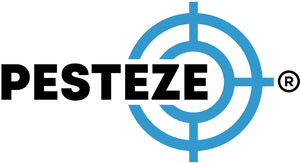PREVENT BIRDS FROM NESTING IN DRYER VENTS WITH THESE EFFECTIVE SOLUTIONS!

PREVENT BIRDS FROM NESTING IN DRYER VENTS WITH THESE EFFECTIVE SOLUTIONS!
SUMMARY
Birds nesting in dryer vents can cause serious problems, from fire hazards to damaged ventilation. This blog post provides six humane methods to deter birds from nesting in your dryer vents. Learn how to keep your home safe with these long-term strategies.
FEATURES
- Install a Vent Cover: Use a specialized vent cover to block birds from entering while maintaining airflow.
- Clean Vents Regularly: Regularly clean your dryer vent to remove debris and nesting material that could attract birds.
- Use Mesh Screens: Place durable mesh screens over vents to prevent birds from entering but still allow proper ventilation.
- Set Up Visual Deterrents: Hang reflective tape or decoys near the vent to scare birds away.
- Apply Bird Repellent Gel: Use non-toxic bird repellent gel around the vent opening to discourage birds from landing.
- Close Off Inactive Vents: Seal any unused or inactive vents to remove possible nesting spots for birds.
GUIDE DESCRIPTION
Birds nesting in dryer vents is more than just a nuisance—it can create serious hazards for your home. Nesting material can block airflow, causing your dryer to overheat, which may lead to fires. Additionally, birds in your vents can cause damage to the ventilation system and introduce pests or contaminants into your home. To prevent these problems, it's essential to use humane and effective methods to deter birds from nesting in your dryer vents. Below are six strategies to help protect your home and keep birds out.
One of the most effective solutions is to install a vent cover. These specialized covers are designed to allow airflow while preventing birds from entering. They come in a variety of styles, such as flaps or cages, and are easy to install over the dryer vent opening. A vent cover provides a physical barrier that stops birds from accessing the vent, while still allowing your dryer to function normally.
Regular maintenance is also crucial. Cleaning the vents regularly helps remove debris and any signs of nesting material, making the vent less attractive to birds. By keeping the area clean, you reduce the chances of birds attempting to nest inside.
To further protect your vents, consider using mesh screens. High-quality metal or plastic mesh can be placed over the vent opening, creating an additional layer of protection. These screens are small enough to block birds but don’t restrict airflow, ensuring your dryer operates efficiently.
Visual deterrents are another great way to keep birds away. Hanging reflective tape, shiny objects, or decoys near the vent can scare birds off. Birds are cautious of anything that appears to be a threat, so placing a predator decoy like an owl or hawk nearby can also be effective.
If you prefer a chemical-free option, you can use bird repellent gel around the vent opening. This non-toxic gel creates a sticky surface that birds find uncomfortable to land on, deterring them from nesting in the area. The gel is safe to use and doesn’t harm the birds, making it a humane option.
Lastly, if you have inactive or unused vents, make sure to close them off. Birds often look for hidden, sheltered spots to build their nests, and an inactive vent is the perfect place. Sealing these vents will eliminate potential nesting spots and protect your home from birds seeking out these areas.
By combining these strategies, you can effectively prevent birds from nesting in your dryer vents and avoid the associated risks. These humane and simple solutions will help you maintain a safe and bird-free home, without disrupting your dryer’s performance.
- Maanas Mehta


Comments 0